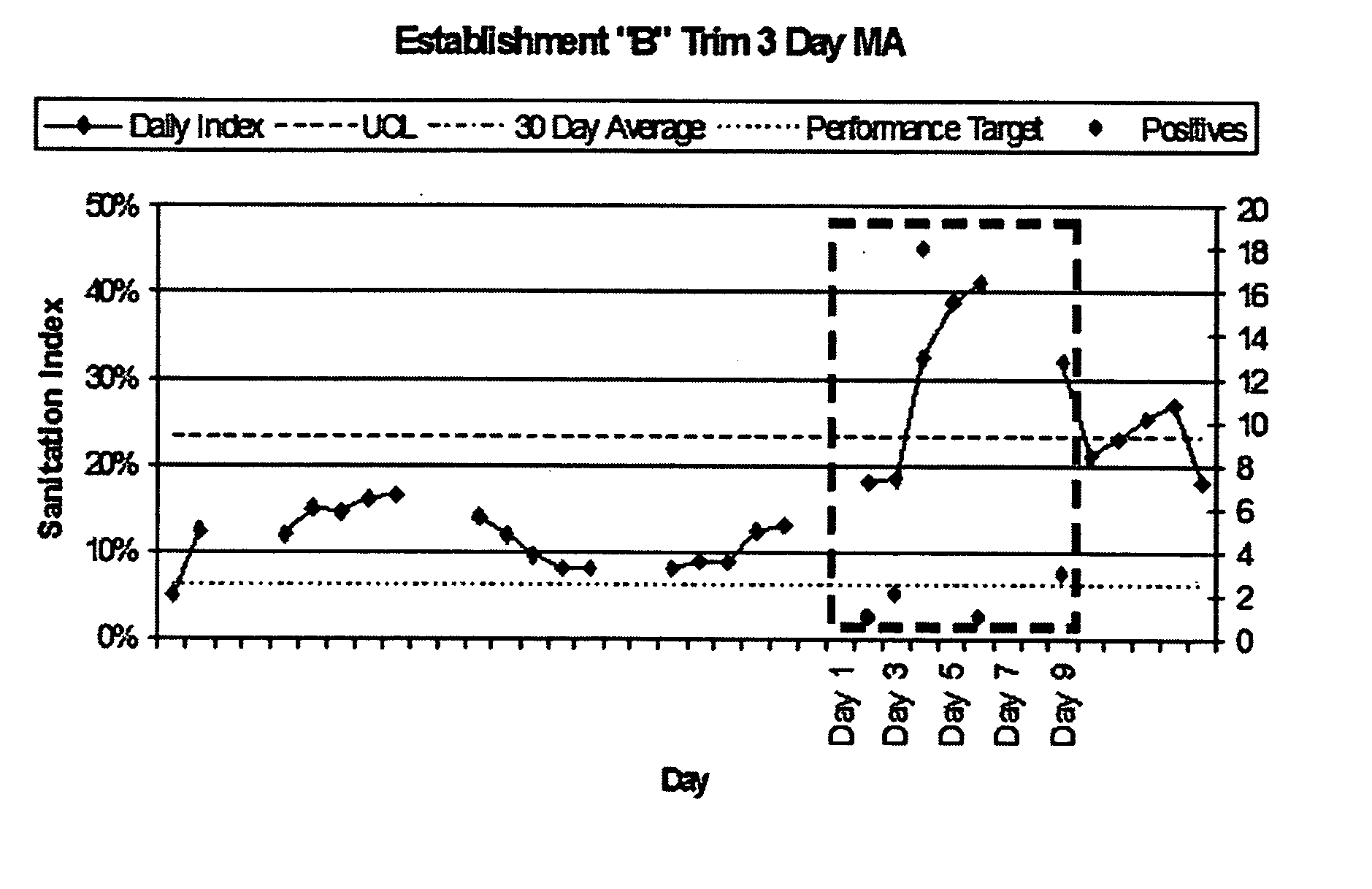Trend analysis and statistical process control using multitargeted screening assays
a trend analysis and statistical process technology, applied in the field of trend analysis and statistical process control using multi-targeted screening assays, can solve the problems of ineffective prior art detection schemes, inability to accurately apply prior art detection schemes to statistical process control, and inability to reliably determine whether the behavior of microbial behavior is present or absen
- Summary
- Abstract
- Description
- Claims
- Application Information
AI Technical Summary
Benefits of technology
Problems solved by technology
Method used
Image
Examples
specific embodiments
[0046] Aspects of the present invention provide a method for microbial monitoring in a process or system, comprising: a) obtaining, at each of a plurality of time points, at least one test sample from a process or system receptive to a plurality of genetically distinct microbes; b) determining for each test sample, and by using a plurality of suitable tests, a presence or absence for each of a plurality of markers of at least one target microbe, wherein at least one of the markers also detects at least one index microbe present in the sample, and wherein the at least one target microbe is considered present only when at least a plurality of all markers tested is determined to be present; and c) further determining, for each time point, at least one index value that is proportional to the number of markers present, whereby temporal changes in the index value are monitored, and microbial monitoring in a process or system is, at least in part, afforded.
[0047] Preferably, the method fu...
example 1
(Microbial Monitoring of Processes and Systems Susceptible to Escherichia coli O157:H7)
[0072] This EXAMPLE describes an exemplary application of particular aspects of the inventive microbial monitoring methods to the beef industry.
[0073] Regulatory agencies strive to continually improve the safety and the quality of food products and related processes, including, but not limited to, beef products and beef producers. For example, in response to the recent FSIS directives and Guidelines, many beef producers have adopted a sampling plan that involves testing of trim, ground beef or both for the specific microbial pathogen E. coli O157:H7 after it has been produced, but before it has been delivered to customers. The sampling plan is a ‘hold-and-release’ plan which dictates that the trim or ground beef is not released by the producing facility to a customer until negative laboratory results are obtained for the presence of E. coli O157:H7. While the majority of abattoirs (slaughterhou...
example 2
(Inventive Microbial Monitoring Methods were Applied to a High Volume Beef Production Facility to Provide for Process Control)
[0086] This EXAMPLE describes another exemplary application of particular aspects of the inventive microbial monitoring methods to the beef industry.
[0087] Rationale. Qualitative pathogen testing, by its nature, typically results in strictly a positive or negative result. As describe above, in addition to the standard result of positive or negative for a give pathogen, multiplex PCR (and / or other assays) allows for determination of negative or positive results for index organisms (e.g., for related coliform bacteria, or associated conditions or attributes). PCR bands indicating the presence, for example, of shiga-like toxin production, or indicating the ability for an organism to attach and efface do not necessarily indicate a target profile (e.g., pathogenic profile; e.g., E. coli O157:H7); that is, frequently, these nonspecific bands are associated with ...
PUM
| Property | Measurement | Unit |
|---|---|---|
| Fraction | aaaaa | aaaaa |
| Fraction | aaaaa | aaaaa |
| Fraction | aaaaa | aaaaa |
Abstract
Description
Claims
Application Information
 Login to View More
Login to View More - R&D
- Intellectual Property
- Life Sciences
- Materials
- Tech Scout
- Unparalleled Data Quality
- Higher Quality Content
- 60% Fewer Hallucinations
Browse by: Latest US Patents, China's latest patents, Technical Efficacy Thesaurus, Application Domain, Technology Topic, Popular Technical Reports.
© 2025 PatSnap. All rights reserved.Legal|Privacy policy|Modern Slavery Act Transparency Statement|Sitemap|About US| Contact US: help@patsnap.com



